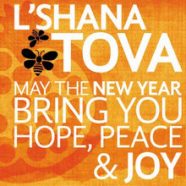
Rosh Hashanah
or in Hebrew ראש השנה, which literally means “head of the year,” is celebrated in 2016 from sundown on October 2 to nightfall on October 4. The Hebrew date for Rosh Hashanah is 1 Tishrei 5777.
The holiday actually takes place on the first two days of the Hebrew month of Tishrei, which is the seventh month on the Hebrew calendar. This is because Rosh Hashanah, one of four new years in the Jewish year, is considered the new year of people, animals and legal contracts. In the Jewish oral tradition, Rosh Hashanah marks the completion of the creation of the world.
Rosh Hashanah is the beginning of the Jewish High Holy Days, or Yamim Noraim (the “Days of Awe”), and is followed 10 days later by Yom Kippur, the “day of atonement.” The Mishnah refers to Rosh Hashanah as the “day of judgment,” and it is believed that God opens the Book of Life on this day and begins to decide who shall live and who shall die. The days between Rosh Hashanah and Yom Kippur are viewed as an opportunity for Jews to “repent” (teshuvah in Hebrew תשובה, which literally means “return” to God) and ensure a good fate.
Jews traditionally gather in synagogues on Rosh Hashanah for extended services that follow the liturgy of a special prayerbook, called a mahzor, that is used during the Days of Awe. At specific times throughout the service, a shofar, or ram’s horn, is blown. The mitzvah (commandment) to hear the shofar, a literal and spiritual wake-up call, is special to this time of year.
The new year is the only Jewish holiday that is observed for two days by all Jews (other holidays are observed for just one day within the Land of Israel) as it is also the only major holiday that falls on a new moon.
A common greeting on Rosh Hashanah is l’shana tova u’metukah, Hebrew (שָׁנָה טוֹבָה וּמְתוּקָה) for “a good and sweet new year.” Many traditional Rosh Hashanah foods — apples and honey, raisin challah, honey cake and pomegranate — are eaten, in part, for this reason.
Click here to read more about this meaningful holiday.



